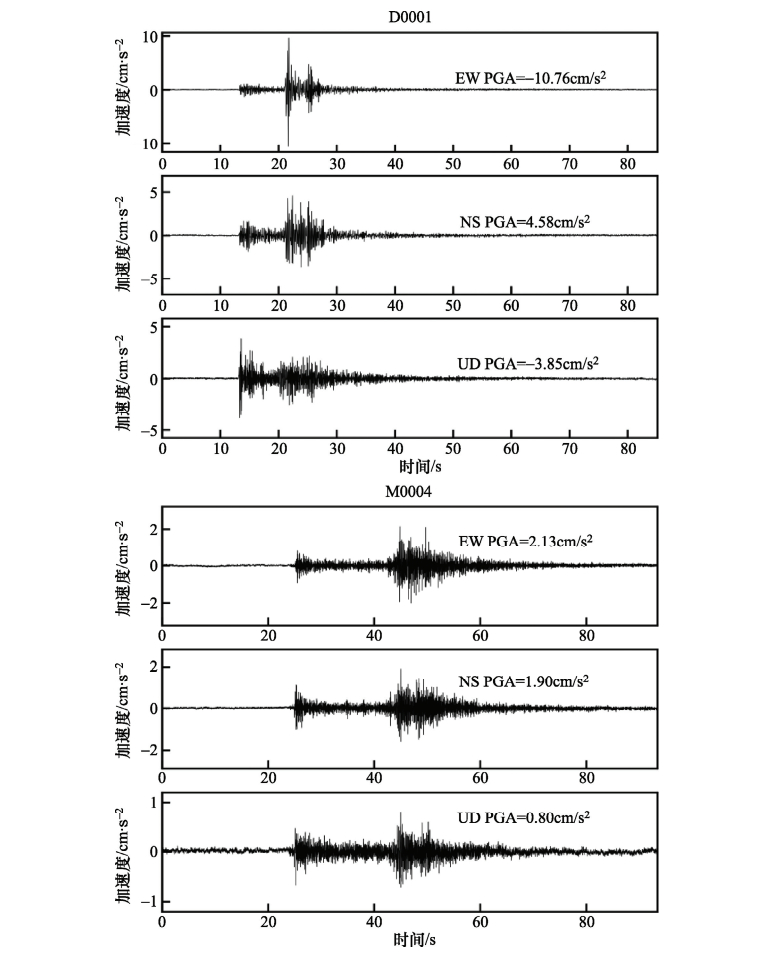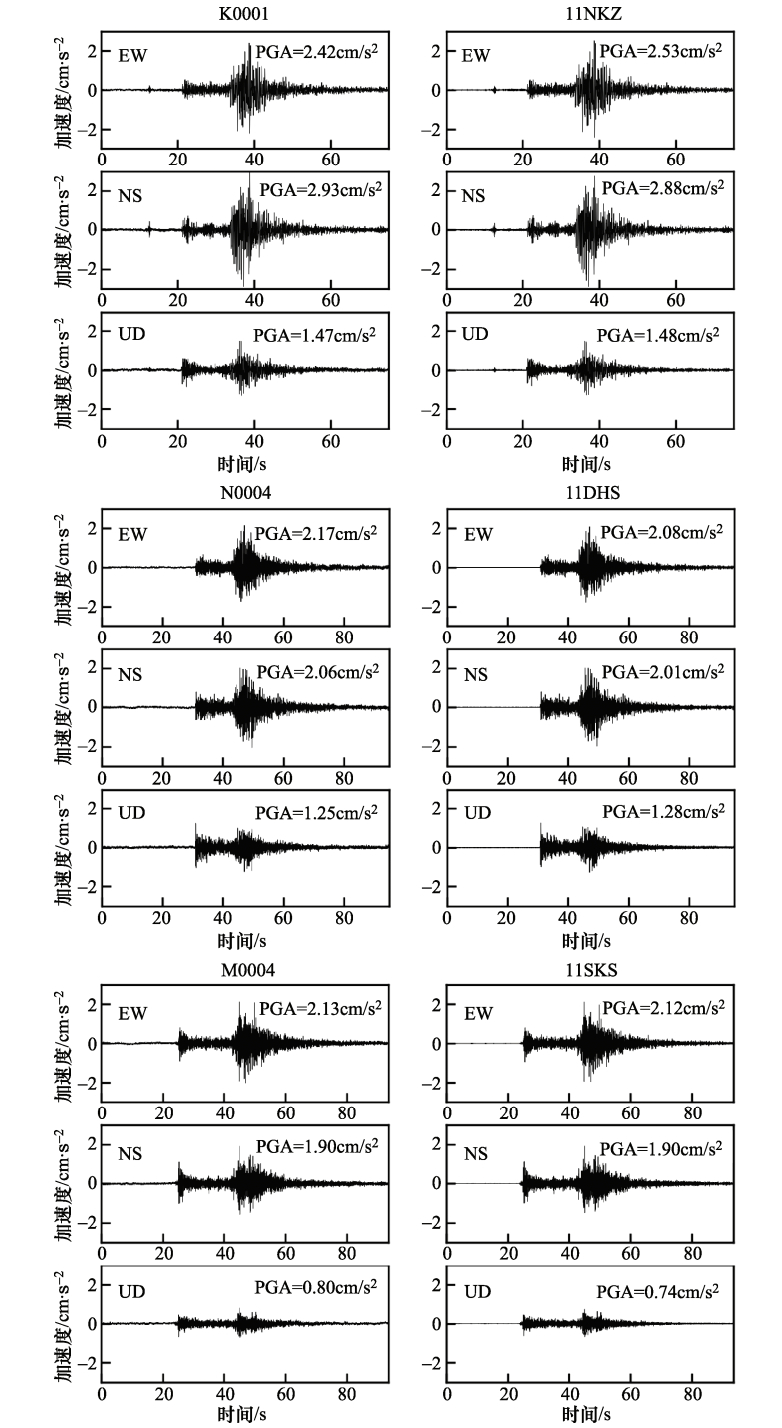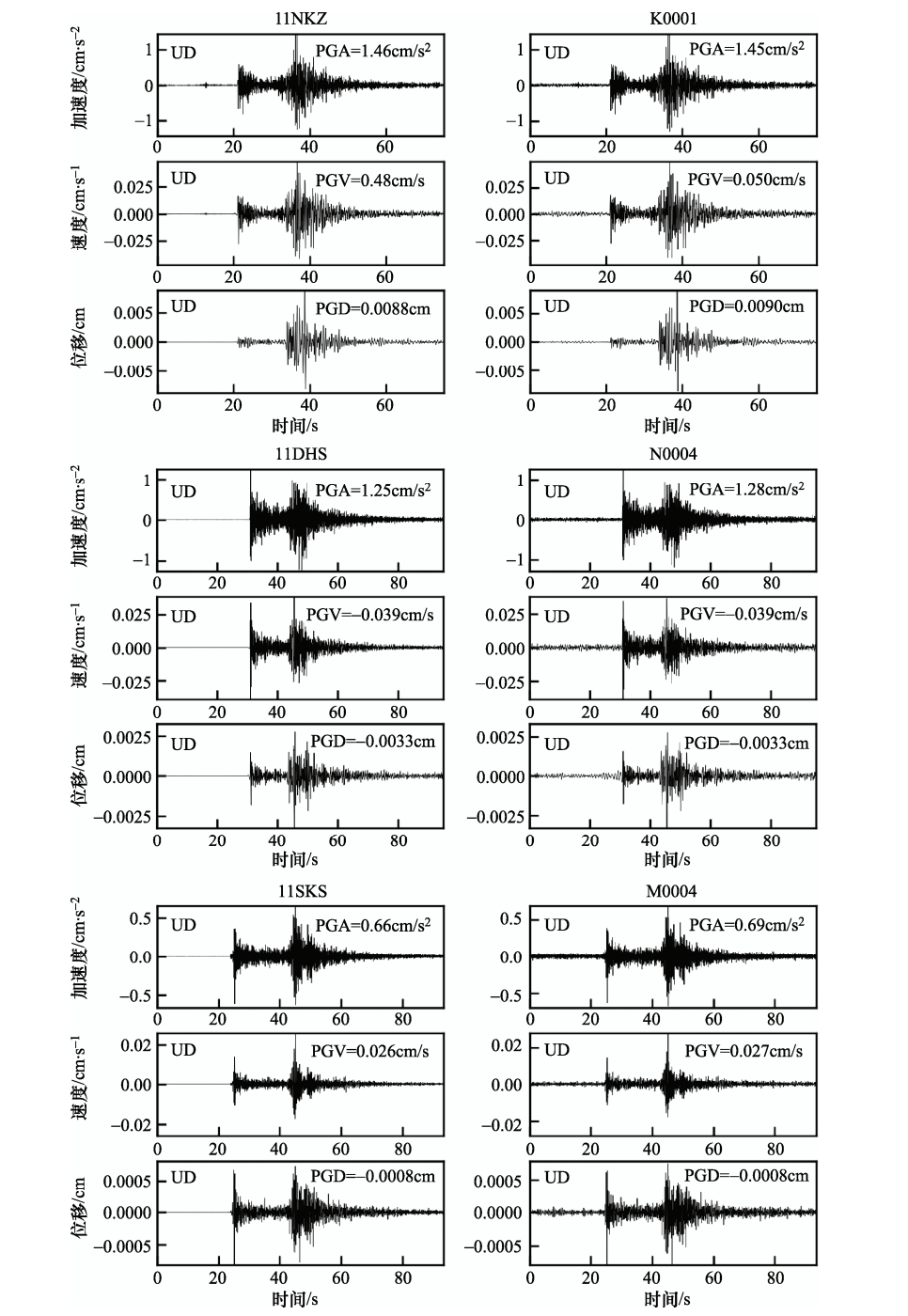Analysis of the Recoed of Beijing Seismic Intensity Meter Network for the M 4.3 Yongqing Earthquake
-
摘要: 2018年2月12日河北永清发生M 4.3地震,北京烈度仪台网共35个台站获得有效记录,记录最大峰值加速度的台站为丰台地震台(D0001),峰值加速度为10.76cm/s2,该台距震中约61km。本文对北京烈度仪台网获得的此次地震动记录进行了初步分析,并对3个同台址的强震动仪记录的数据进行了对比分析。结果表明,烈度仪记录计算得出的仪器烈度与强震动仪记录计算的仪器烈度结果具有较高的一致性,可用于烈度速报。Abstract: An earthquake with magnitude 4.3 occurred on 12 February 2018 in Yongqing County, Langfang City of Hebei Province.There are 35 seismic stations that received the acceleration data in the Beijing seismic intensity meter network.The nearest station is Fengtai station, with an epicentral distance 61km, and peak ground acceleration was 10.7cm/s2. The farthest station is Sankuaishi station, with an epicentral distance 158km, and the peak ground acceleration was 2.1cm/s2.The preliminary analysis shows that the data recorded by the seismic intensity meters were clear and complete. Data recorded by the seismic intensity meter and the acceleration meters at the same station are comparable to each other.
-
Key words:
- Seismic intensity meters /
- Acceleration meter /
- Noise /
- Instrumental seismic intensity
-
表 1 烈度仪和强震动仪主要参数指标
Table 1. The main specifications of seismic intensity meters and acceleration meters
技术指标 GL-P2B SLJ-100 传感器 类型 MEMS传感器 力平衡式加速度计 频带范围 DC-80Hz DC-80Hz 动态范围 大于等于95dB ≥120dB 满量程 水平向2.0g,垂直向-1—3g 2.0g 数据采集 ADC 28位 24位 采样率 100Hz 100Hz 数字滤波器 最小相位FIR 线性相位FIR -
王浩, 丁炜, 2013. MEMS加速度计与传统地震加速度计的比较研究.大地测量与地球动力学, 33(S2):93-95. http://d.old.wanfangdata.com.cn/Conference/8203447 于海英, 周宝峰, 王家行等, 2017.强震动观测仪器面临的机遇和挑战.震灾防御技术, 12(1):68-77. http://zzfy.eq-j.cn/zzfyjs/ch/reader/view_abstract.aspx?flag=1&file_no=20170107&journal_id=zzfyjs 中国地震局监测预报司, 2015.仪器地震烈度计算暂行规程.北京:地震出版社, 1-10. Clayton R. W., Heaton T., Kohler M., et al., 2015. Community seismic network:a dense array to sense earthquake strong motion. Seismological Research Letters, 86(5):1354-1363. doi: 10.1785/0220150094 Cochran E. S., Lawrence J. F., Kaiser A., et al., 2011. Comparison between low-cost and traditional MEMS accelerometers:a case study from the M7.1 Darfield, New Zealand, aftershock deployment. Annals of Geophysics, 54(6):728-737. http://d.old.wanfangdata.com.cn/OAPaper/oai_doaj-articles_2820a1d7e05b6cd8513e1fdd3a49fec8 D'Alessandro A., D'Anna G., 2013. Suitability of low-cost three-axis MEMS accelerometers in strong-motion seismology:tests on the LIS331DLH (iPhone) accelerometer. Bulletin of the Seismological Society of America, 103(5):2906-2913. doi: 10.1785/0120120287 Evans J., R. Hamstra, R. H., Kündig C., et al., 2005. TREMOR:a wireless MEMS accelerograph for dense arrays. Earthquake Spectra, 21(1):91-124. doi: 10.1193/1.1856534 Evans J. R., Allen R. M., Chung A. I., et al., 2014. Performance of several low-cost accelerometers. Seismological Research Letters, 85(1):147-158. doi: 10.1785/0220130091 Hsieh C. Y., Wu Y. M., Chin T. L., et al., 2014. Low cost seismic network practical applications for producing quick shaking maps in Taiwan. Terrestrial Atmospheric and Oceanic Sciences, 25(5):617-624. doi: 10.3319/TAO.2014.03.27.01(T) Wu Y.M., Mittal H., Huang T.C., et al., 2018. Performance of a Low-Cost Earthquake Early Warning System (P-Alert) and Shake Map Production during the 2018 MW 6.4 Hualien, Taiwan, Earthquake. Seismological Research Letters, 90(1):19-29. -




 下载:
下载:






